DESIGN. Consider your yard additional room(s) for your home. So think about how you’ll use it. Need a place for kids and dogs to run around? Choose grass (if you have enough sun) or artificial turf. Rock, gravel & mulch are low-maintenance… but they don’t need to be bare and uninteresting. Consider two contrasting colors of rock, and add a few shrubs & perennial flowers to bring it to life.
Look out your windows. What views do you want to frame? Plant a tree or shrub to one side… and leave space for it to grow. Where do you need privacy? A screen, fence height extension or row of shrubs can help. Create a focal point. You might also consider upgrading your lighting with solar or low-volt LED lights and the ubiquitous string lights. Talk to your neighbors – they may have input too.
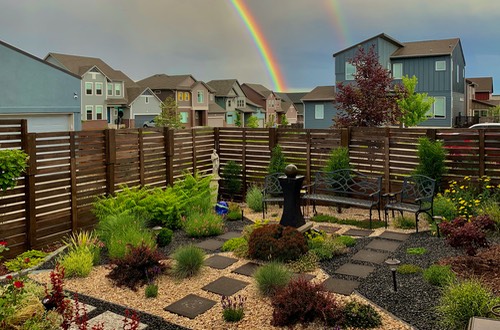
Talk a walk. Look for ideas at parks and neighbors. Take pictures of things you like. Draw up a plan on paper or computer. Submit it to your HOA or metro district, if applicable. Structural changes like attached decks & pergolas might need city/county approval too. You might be tempted to go it alone when making minor changes to your side yard but doing it right isn’t hard… with a little advanced planning.
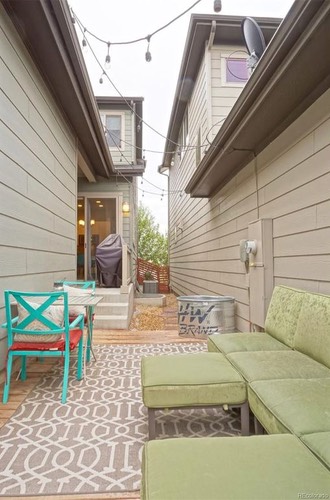
PROPERTY LINES. In our neighborhood, the area up to the sidewalk belongs to the homeowner, and beyond that is metro district property. If you’re adjacent to a park, a sizable part of your front yard might not really be yours.
Most of us have easements – areas where utilities run on our property or side yards that may belong partially to neighbors. Look at your closing documents to see where easements and property lines are so you don’t damage something that’s not yours.
Have you noticed most new houses are built on a slope, with a valley between homes? That’s for drainage. You make must maintain the drainage or you could cause serious structural damage and void your warranty. You might connect a drain pipe to the end of the downspout and bury it, as long it flows down to the street or alley. If you install a patio extension, deck, or level out that valley you can utilize space… as long as you have proper drainage. And don’t install trees, plants or grass within a few feet of your house if they need lots of water. That can damage your foundation.
TREES SHRUBS & FLOWERS. Plants give life in so many ways. Not only do they provide shade & beauty, they’re good for the environment. Flowers don’t just look great, they can also attract butterflies, hummingbirds… and bees (which could be good or bad).
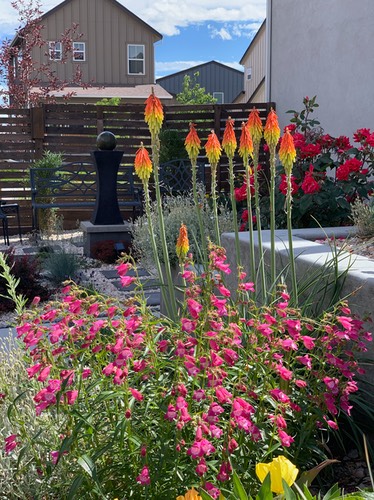
Plants fall into several categories based on how big they are and how they’re used in the landscape. Shade trees, such as maple, elm & linden are larger trees for the area by the street. Ornamental trees like crab apple, pear & serviceberry are smaller and can be planted 10 feet from the house or in the alley. Many have flowers in the spring. Shrubs & bushes (buckthorn, lilac, spirea) are 3-10 feet tall & wide – perfect for side yards. Perennial flowers (black-eyed susan, coneflower, daylily) come back each year so you don’t have to replant. Evergreens (pine, juniper & spruce) & ornamental grasses give year-round interest.
Two trees that do very poorly here are ash & honeylocust (with the tiny leaves). Many of them are dead or struggling.
If you’ve lived in other places, the trees & plants you’re used to may not thrive in midtown due to our hot dry summers, cold winters, and heavy or rocky soils.
Click for a list of recommended trees & plants, including descriptions, sizes… and pictures. You can download, view on a computer, print if you like. And ID plants like a pro.
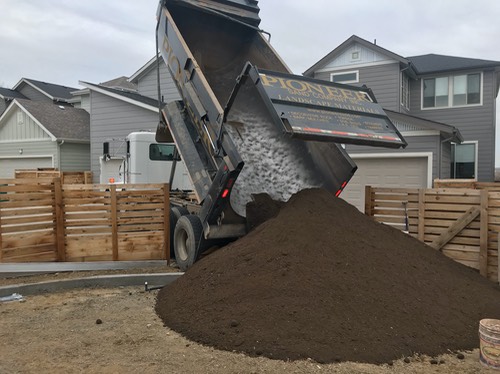
WHERE TO BUY. Check Lowe’s or Home Depot, but for the best selection & quality go to a nursery. They can also install for you. Try Echter’s (52nd Ave 1 mile west of Arvada Home Depot), or O’Toole’s & Front Range Gardens (Church Ranch & Wadsworth). The Tree Farm in Erie has 1000s of trees and buy one get one free in September. It’s like going to Disneyland.
REPLACING TREES. Trees change the look of your home and our neighborhood for life. And they’re not that expensive. Even a $250 5-foot tree will grow in time. If your tree died, you’ll have to replace it or risk a citation from your HOA/metro district. Some trees & plants might be covered under warranty.
HOW TO PLANT. You need to improve soil if you expect things to survive here. Dig a hole 2-3 times wider than the root ball/pot. Remove the pot or burlap, then plant. Fill with compost & topsoil. Water it well to get it started, then let it dry out just a bit before deep watering again. Keep a careful eye on it the first year. Don’t be surprised if it takes a couple years to really start growing. Another option: build raised beds/planters out of concrete or blocks and fill with quality topsoil. You’ll avoid all the problems with our native soil. Nurseries and rock yards can drop off tons of this stuff or hire a contractor.
SOIL. Much of our community is built on clay soil, which is absolute crap [technical term!] for growing things. Some dead trees around are due to OVER watering that clay, which drowns them. So before you water… feel the dirt an inch or two down. If it’s dry, water. If not… don’t! Even if the tree/plant is wilting. You might just be killing it.
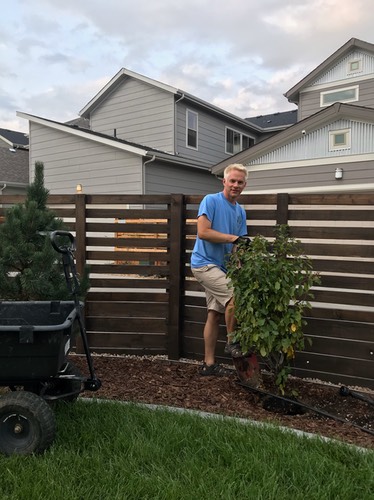 WATER. Start your sprinklers in late April/early May. Most grassy areas need 7-10 minutes every day. Drip zones on your shrubs/flowers probably need 60-75 minutes twice a week if they’re in the sun, less in shade. Check your irrigation timer, go online to learn how to program it or ask a neighbor. Remember, that 5-foot grassy strip by the street is probably watered from your system. If grass or tree die, you may have to replace it.
WATER. Start your sprinklers in late April/early May. Most grassy areas need 7-10 minutes every day. Drip zones on your shrubs/flowers probably need 60-75 minutes twice a week if they’re in the sun, less in shade. Check your irrigation timer, go online to learn how to program it or ask a neighbor. Remember, that 5-foot grassy strip by the street is probably watered from your system. If grass or tree die, you may have to replace it.
There is a seasonal adjustment on the irrigation timer so you can adjust water without reprogramming. July & August may require 120–150% if there’s no rain. 50% is usually sufficient in April & October. Water may be required any time there is no precipitation for an extended period. If the ground feels dry, water. From November – March this may require watering by hand with a hose.
MAINTENANCE. Trim dead branches & spent blossoms throughout the growing season. Cut off perennial flowers a few inches above the ground after the November freeze. Prune trees & shrubs before leaves appear in early spring (March). If you want a taller tree or shrub, remove lower branches with a clean cut near the trunk – that forces it to grow up. Also cut branches that cross. A fewer number of strong main branches are better than a tangled mess of spindly twigs. Trees should have their lowest branches above shoulder height and not block streets, sidewalks or windows.
Ornamental grasses should be cut 6 inches from the ground in early spring before they begin to grow. It makes for a tidy green plant in summer. You can leave the dry grass to sway in autumn winds and decorate the winter landscape until the next spring.
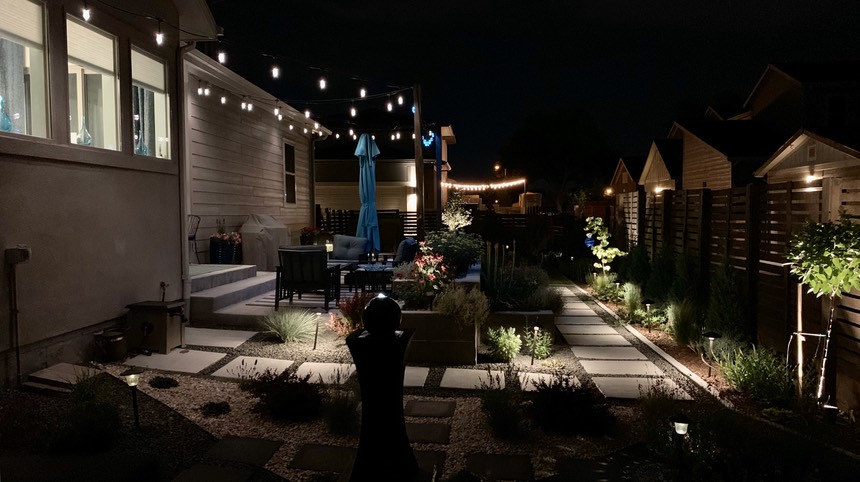
Winterize your irrigation system in late October by turning off the water supply in the basement and draining lines. There’s usually a drain in the valve box. Turn off water before a hard freeze to prevent the outside metal back flow preventer from bursting – a costly repair. Look for YouTube videos on how this works. You can hire someone to blow water out of the lines.
TOO MUCH WORK? Don’t be afraid to ask for help. Hire a contractor for part or all of your job.
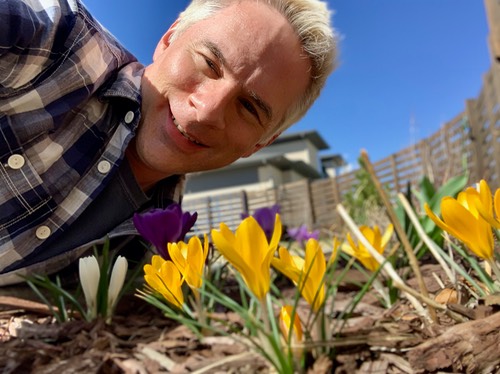
KEEP IN TOUCH. With the right approach, your outdoor living space can bring years of enjoyment to you and your family… and keep our community a beautiful place to live. Have fun! Otherwise it’s just yardwork, and nobody likes that!
I hope you found this guide helpful. Let me know if you have questions. I look forward to meeting you and sharing ideas.
– Robert Pickering, member of Homeowners at Midtown Denver since 2017.